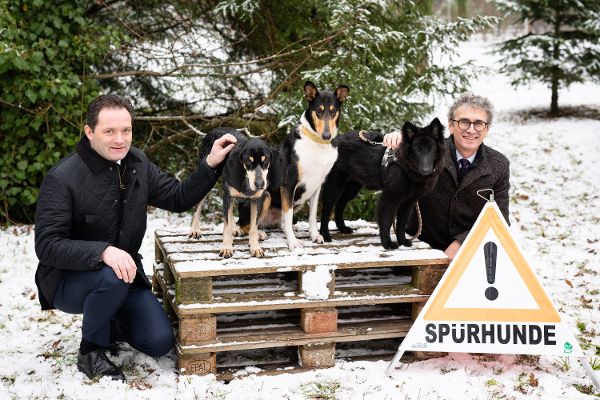Use of detection dogs to combat forest pests

The effects of climate change on forest stands and wood volume require innovative solutions to protect Austria's forests. Pests such as the bark beetle are increasingly becoming a problem. The detection dog programme of the Austrian Research Centre for Forests (BFW) is an innovative pioneering approach for detecting these wood pests.
More pests in forests due to climate change
In 2021, the bark beetle caused around two million cubic metres of damaged wood. The extent of damage may increase even further due to the consequences of global warming. Periods of drought and higher temperatures favour the spread of pests like the bark beetle.
In addition to indigenous harmful organisms, invasive species pose a threat to forest health. One of them is the Asian longhorned beetle, which has caused severe damage in Austria. However, thanks to good methods for identifying infested trees, such as detection dogs, it has been eliminated.
Detection dog project to combat pests
Since 2009, detection dogs have been trained at the BFW to sniff out faeces, drilling chips, egg deposits, infested host plants, adults or live larvae of the Asian longhorned beetle and its relative, the citrus longhorned beetle.
Infestations of poor-quality wood packaging material of imported products pose a problem. The high number of infestations identified throughout Europe shows the necessity of such control measures.
To date, 131 dogs and around one hundred dog handlers from Austria, Germany, Switzerland, Belgium and the Netherlands have been trained. Since 2017 additional detection dogs have been trained to sniff out the Emerald ash borer.
In a pilot project, detection dogs are also being trained for the bark beetle. According to the head of the BFW, six dogs have initially been trained and a certificate course is being developed to train bark beetle detection dog teams. The detection dog programme examines whether infestations can be detected at an early stage and whether forests can be better protected as a result.